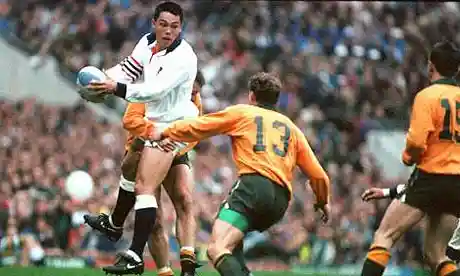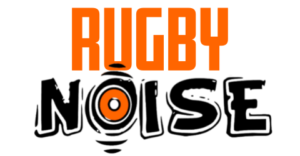Over the years, the England national rugby union team has produced some of the most formidable players the sport has ever seen. Names like Jeremy Guscott, Martin Johnson, Jason Robinson, Jonny Wilkinson, and Lawrence Dallaglio are a testament to this fact. A journey further back into history reveals that the above-mentioned players are only beneficiaries of the excellence that trickled down from those who came before them like the late great Sir Wavell Wakefield, who is credited with revolutionizing the flanker position. One other player deserves to be at the front and center of this exclusive list for his awe-inspiring performances, especially on the offensive end.
Who holds the international try-scoring record for British rugby players? Rory Underwood holds the international try-scoring record for British rugby players with 49 tries in 85 international appearances. The former wing has held the record for the last 26 years and may maintain his place in the history books for a while longer as only winger Jonny May, who trails him by 14, has any realistic chance of challenging his record in the near future.

Humble Beginnings
Underwood was born in Middlesbrough in North Yorkshire, England to an English father and a Chinese-Malaysian mother. His father’s profession (engineer) necessitated that they move around often and he ended up spending a portion of his early childhood in his mother’s native country, Malaysia.
The former Leicester Tigers star showed a natural inclination towards sports from a young age and played a number of sports including athletics, which many believe is responsible for having developed the devastating speed that he would later come to be known for.
In a past interview, Underwood disclosed that he first discovered that he had a knack for playing rugby while at Barnard Castle School – an independent day and boarding public school located in County Durham in the North East region of England – at age 11.
The ex-Bedford Blues ace also revealed that he used to play as a winger in football and naturally gravitated toward the same role when he was asked which position he would like to play in rugby. Underwood quickly picked up the intricacies of the sport and was soon the standout player at his school. He also honed his skills at the Middlesbrough Rugby Club alongside former England fly-half Rob Andrew.
Military Service
After completing his secondary education, Underwood felt a calling to serve his country and so joined the Royal Air Force where he first started out as a flying officer and a pilot before transitioning into a flight lieutenant and a station flight safety officer.
Underwood continued serving in the RAF throughout his club career with the Leicester Tigers and Bedford Blues before calling time on his military career in 1999. Some of the flight systems that Underwood either flew or instructed on include the BAE Systems Hawk and the British Aerospace 125.
His military service reflected in both his rugby career as Underwood was rarely, if ever, cautioned or penalized for indiscipline. He has also been a model citizen for arguably all his life and has never been known to indulge in some of the negative habits that are normally associated with professional athletes.
Becoming a Legend
Underwood made his debut for the Red and Whites in a clash against Ireland in February 1984, quickly establishing himself as a regular. He subsequently represented England during the 1987, 1991, and 1995 Rugby World Cups and was an integral part of their success.
Unlike traditional wingers who only operate on either the right or left wing, Underwood was versatile and could effortlessly switch between the two making him a sought-after talent in his heydays. His stellar speed was further complemented by his strength which was uncharacteristic of a player of his stature.
The former RAF pilot was also a student of the sport, which allowed him to be exceptionally effective on both offense and defense despite the fact that his position is normally associated with the former. Underwood would often catch kicks, particularly on the blindside wing.
He would also assist his side’s full-backs to stifle opponent attacks and act as the last line of defense. A look at his playing footage reveals a fearless player who often operated on the inside almost as much as he did on the wing.
Underwood’s strong base allowed him to play through tackle attempts and plow through opposing defense en route to the try line – a characteristic that was not as common with wings before the larger more physically-imposing one’s like former All Blacks legend Jonah Lomu came along.
A quick look at Underwood’s international career record testifies to his prowess as England won nearly 90% of the matches he featured in and registered victories against all their opponents including New Zealand, Australia, Wales, Scotland, Fiji, Japan, Italy, Ireland, France, Canada, and Wales.
Family Trade
You could say that rugby ran in the family where Underwood was concerned as his younger brother, Tony Underwood, equally had a notable career of his own and even partnered his older brother on the wings in the 1995 Rugby World Cup.
Rory and Tony made history by becoming the first set of brothers to play for England since Arthur and Harold Wheatley, who ushered in the trend in the late 1930s. The Underwood brothers did however set a record of their own by becoming the first pair of brothers to score tries for England in the same match in a fixture against Scotland in 1993.
Tony arguably had one of the softest transitions into international rugby on account of the body of work that his older brother had done over the years. He even followed in Rory’s footsteps by playing for the Leicester Tigers before becoming a regular for England.
In a true gesture of brotherly love, Rory switched from playing on the right wing to the left as it suited Tony better. Tony would eventually play on for two more years after Rory’s departure from international football before he himself hung up his rugby cleats in 1998. Interestingly, Rory’s wife also served in the RAF as an air traffic controller.
